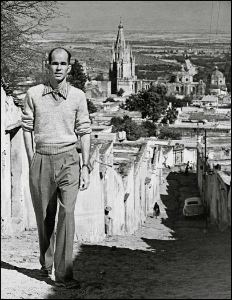|
San Miguel History
No history of San Miguel would be complete without examining its roots back to the pre-Hispanic era. The first evidence of recorded history for the area comes from the excavations of pyramids and other architectural structures of the central basin of the Laja River.
We only need travel 10 miles outside of San Miguel de Allende to discover its pre-Columbian origins. Canada de la Virgen (Canyon of the Virgin), a pre-Columbian archeoligical site, formally opened to the public in Febraury, 2011 after many years of excavation and restoration.
In Mexico, The National Institute of Anthropology and History (INAH) has demonstrated that the builders of these structures were most likely ancestors of Otomi origin and used these structures for both rituals and ceremonies as well as to guide the ancient farmer's groups in knowing the cycles for planting and harvesting.
These structures date back to 540-1050 A.D. At the Canada de la Virgen site there are seven enormous pyramidal structures of different sizes and styles, sunken patios and squares, an area that might have been used for some type of ball sport, and large open esplanades. Ceramic artifacts found during the site excavations point to similarities to other Meso-American architectural patterns. These patterns contain a common symmetrical axis which is directed toward the sun and moon rising and setting, i.e., East to West.
San Miguel de Allende and the surrounding area play a key role in modern Mexican History, as well. San Miguel de Allende was previously known as San Miguel de los Chichimecas and later San Miguel el Grande after the village was formally founded by a Franciscan monk named Juan de San Miguel in 1542. His mission was to evangelize the Indians and also to teach them European techniques of weaving and agriculture. The friar, a dog lover, started a mission near a river which was located around 5 km from the present location of the village. One day during a particularly dry spell, the dogs disappeared from the mission. The friar later tracked the dogs down to a flowing spring called "El Chorro". Afterwards the mission was moved to this new and superior location.
At the time, the town was considered the northernmost Spanish settlement of central Mexico and was a key stop-over for the transportation of silver and gold from the rich mineral centers of Zacatecas and the North to Mexico City. Following the Spanish conquest of Mexico, the mining industry began to flourish in the central highlands region of Mexico and this route became the primary means of delivering this commodity. The territory had been home to the Chichimeca Indians and many skirmishes broke out between the Spanish settlers and the Indians over the Spanish occupation of the area. This resistance led to the establishment of a Spanish garrison in 1555 to protect passage on the road from Zacatecas to Mexico City. The Spanish also united with the Tarascan and the Tlaxcalan peoples who became their allies in protecting the route.
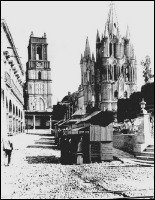
Large haciendas surrounded the city and in the town center huge mansions, beautiful churches and magnificent buildings were constructed.
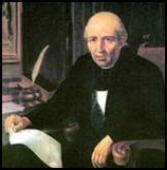
He later teamed up with a parish priest, Father Don Miguel Hidalgo and they began a movement for independence.
Aldama immediately set out to warn Allende and Hidalgo, and in the early hours of September 16th he found Allende at the home of Father Hidalgo in the nearby town of Dolores. A few hours later Hidalgo proclaimed separation and rebellion from his church in the famous Cry of Independence Speech (called the "El Grito").
The Spanish army was at this point still strong and organized. Unfortunately, after the rebels' initial successes, the independence movement was crushed. In 1811, Allende, Hidalgo and other rebel leaders were captured in Chihuahua. The leaders of the movement were all executed and their heads displayed in cages outside of the granary in Guanajuato for all to see. Finally, in 1821, after an 11 year war, Mexico received its independence. Allende, Hidalgo, Aldama were recognized as martyrs and heros and in 1826, the town was renamed San Miguel de Allende in his honor.
San Miguel went through a period of decline following the war. The opulent churches and mansions began to decay and poverty was widespread due to the scaling back of mining operations in the region. By the turn of the century, the town was in danger of dying out completely. But, in 1926, the Mexican government declared San Miguel de Allende a national historic monument.
By the late 1940s, a large number of Ex-US Servicemen began moving to San Miguel to study art. The art and language schools were accredited by the U.S. Embassy and qualified under the G.I. bill. Ex GIs and others discovered the much lower cost of living and quality of life in San Miguel. Later, following the closing of the accredited school in San Miguel, a new school was founded by American and part time San Miguel resident, Stirling Dickenson. This school was never to become accredited and this resulted in many of the war veterans relocating to other parts of Mexico or back to the U.S.
During the 1960s, a significant time of growth of the counter-culture movement in the U.S., San Miguel began to welcome American ex-patriots. A noteworthy resident of San Miguel de Allende at this time was Ken Kesey and the Merry Pranksters as portrayed in Tom Wolfe's famous novel The Electric Kool-Aid Acid Test. The foreign community of San Miguel has grown tremendously since then and the ex-patriot Americans, Canadians and Europeans now number around 15,000 at certain times of the year. They are an active and vibrant part of the community and add a bi-cultural influence to this historic city. San Miguel de Allende remains as an art and cultural center. The Instituto de Allende continues to offer classes in art and language along with several other quality educational institutions.
Today, San Miguel is recognized internationally for its quality hand made goods, art, sculpture, and numerous art galleries. Many well known artists and authors have made San Miguel their home. Tourism related business is now number one for San Miguel de Allende.
Return to San Miguel Main Page
|
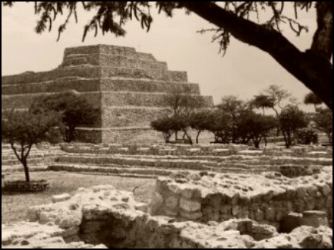
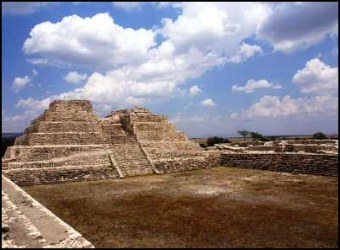
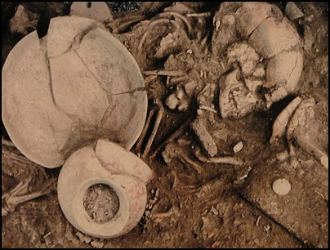
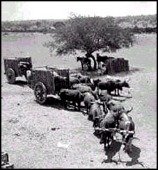
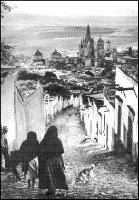
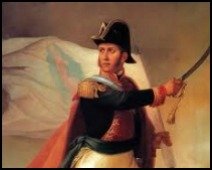
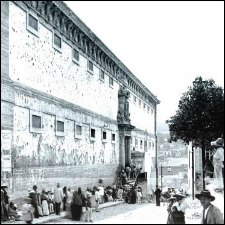
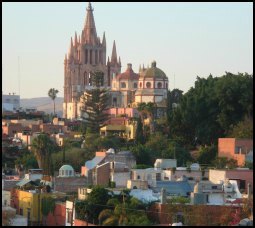 This meant not only recognition but also in the Central Historical District, modern construction, neon signs and anything other than colonial architecture were banned in order to preserve the colonial atmosphere. The city then began a renaissance of restoration and to this day the style and elegance of the town has been preserved. Neon signs are still prohibited and the town has retained much of the look as it did in the 1700s.
Around 1938, the Instituto de Allende was opened as an art and language school marking the beginning of an era when many foreign visitors would come to visit or establish roots in San Miguel.
This meant not only recognition but also in the Central Historical District, modern construction, neon signs and anything other than colonial architecture were banned in order to preserve the colonial atmosphere. The city then began a renaissance of restoration and to this day the style and elegance of the town has been preserved. Neon signs are still prohibited and the town has retained much of the look as it did in the 1700s.
Around 1938, the Instituto de Allende was opened as an art and language school marking the beginning of an era when many foreign visitors would come to visit or establish roots in San Miguel. 